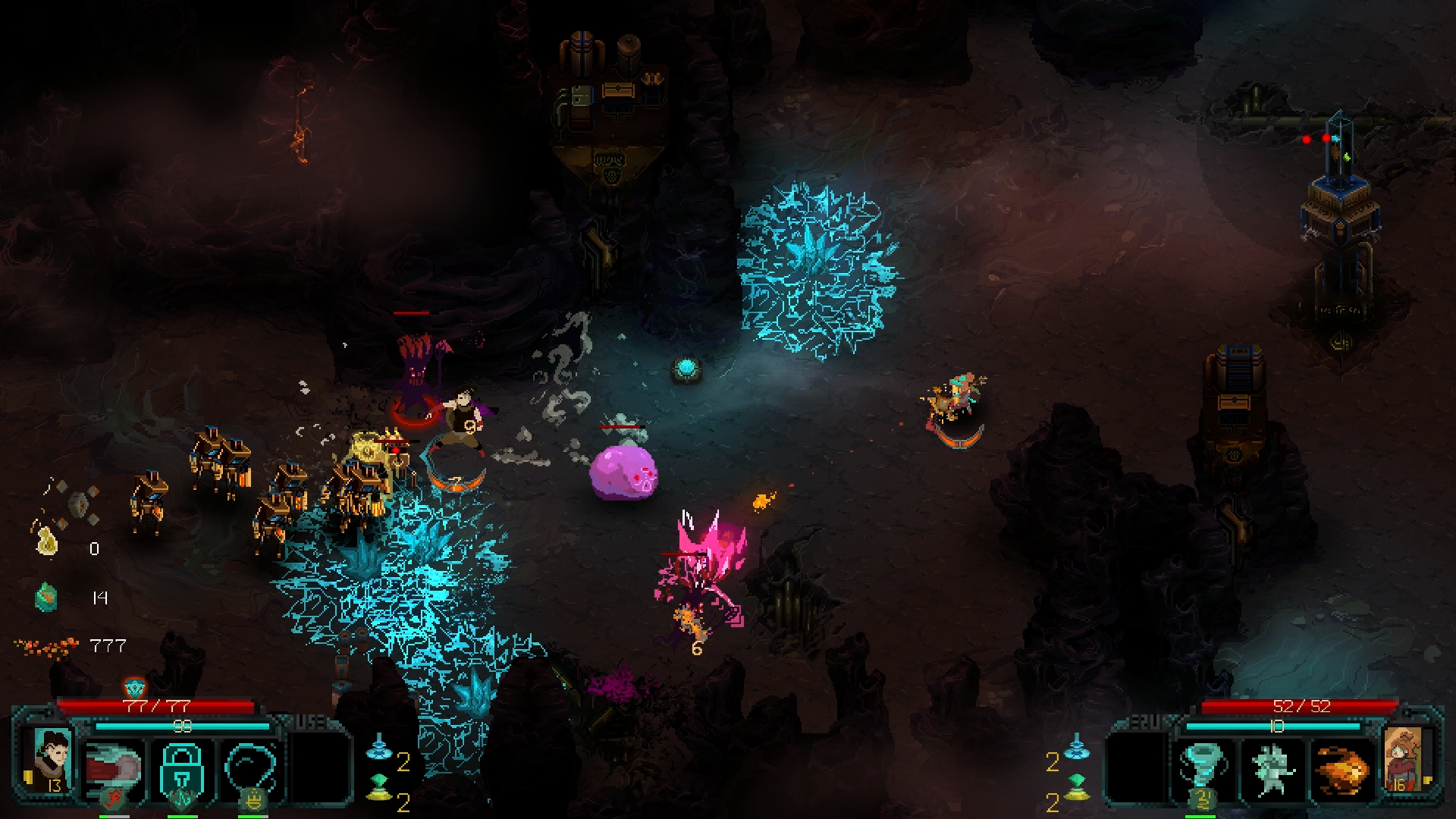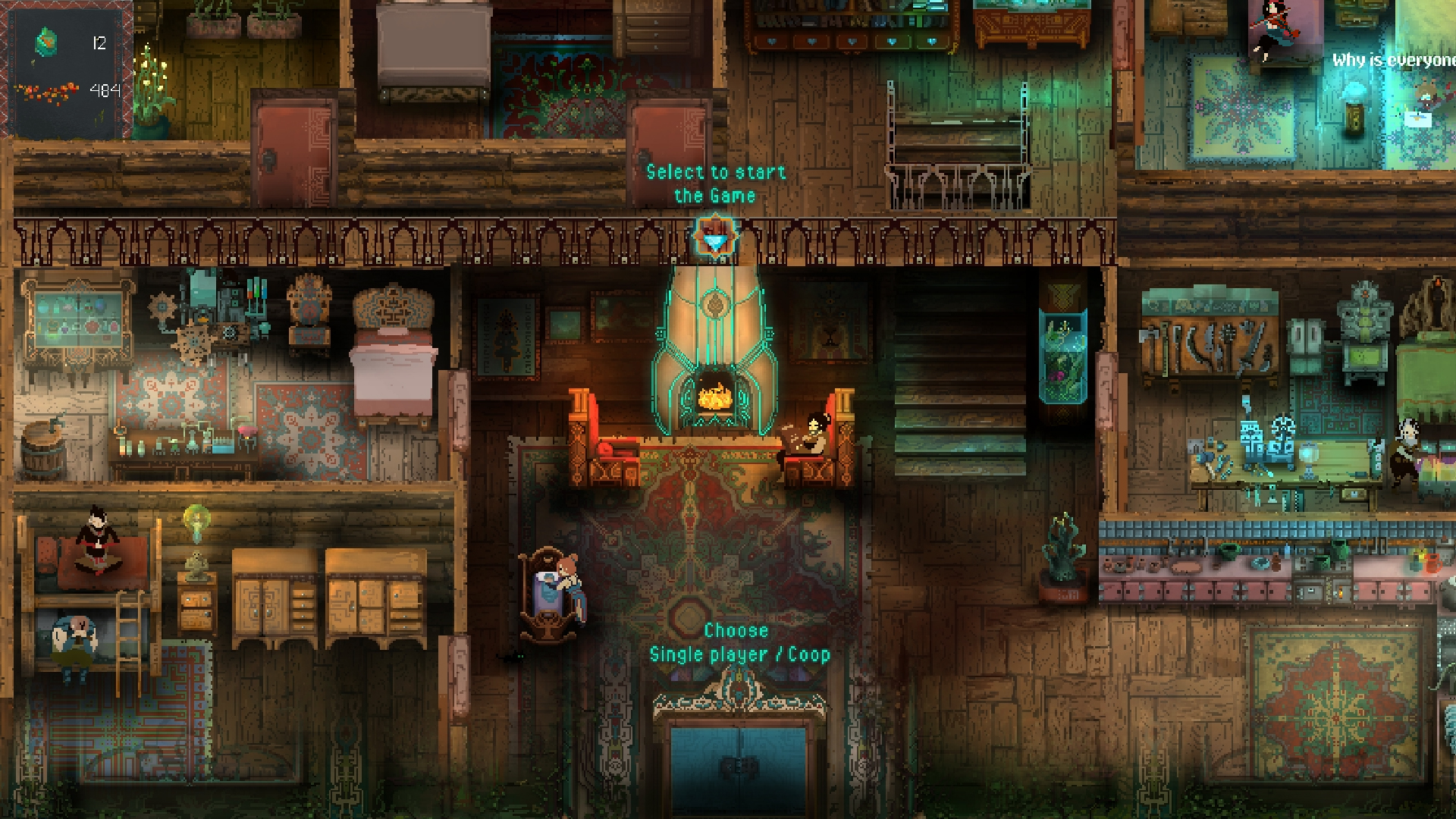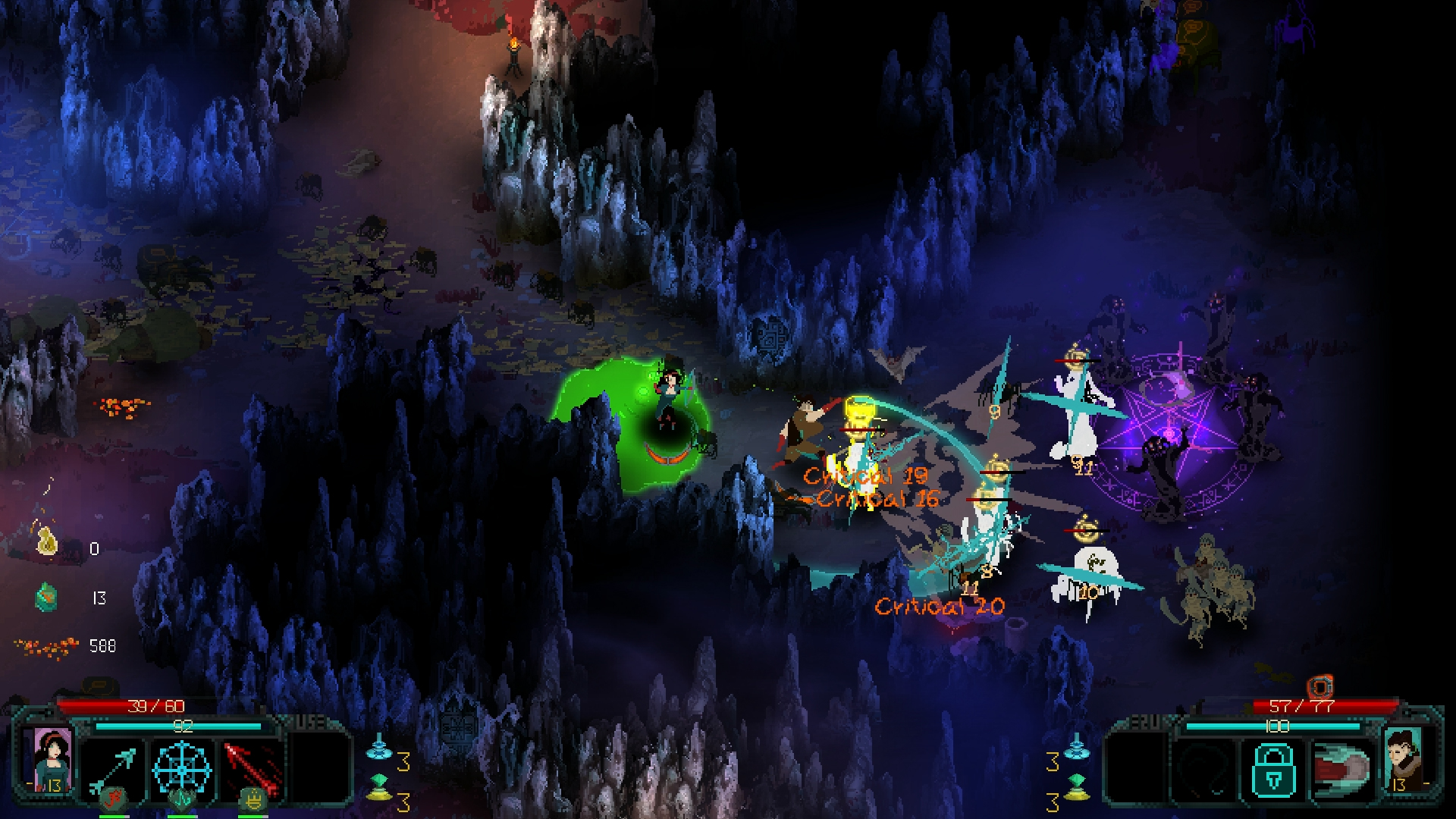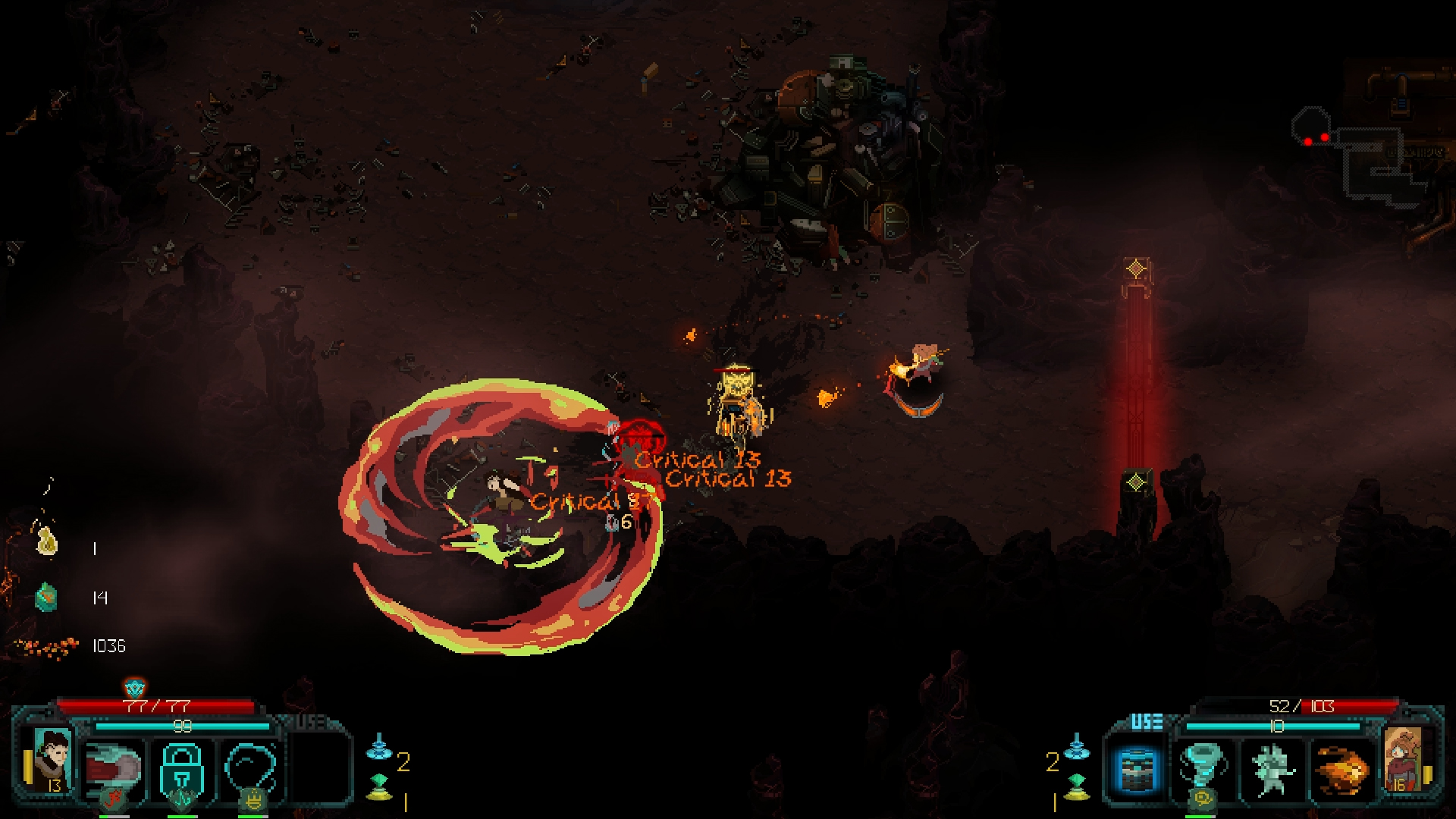Children of Morta is a beautiful roguelike with a surprising focus on family
The family that destroys evil together, stays together.
Children of Morta has the kind of art that's striking from across a room. Pixel art blended with a painter's expressive brush stroke, lush lighting and gradients, and so much detail captured in a single frame you can stare for minutes and still spot something new. It's obvious almost immediately that this is a take on pixel art we haven't quite seen before, and Children of Morta also hopes to be a take on the roguelike we haven't seen before, either. For starting off with the two most familiar cliches in indie gaming, Children of Morta feels surprisingly and welcomely distinct.
Wes: Morta plays like an action-RPG, with seven characters to choose from with their own ability sets and playstyles. They're all members of the Bergson family, some sort of guardians fighting against some mucky force called the Corruption. It's a bit hard to follow story playing at a crowded event, but you had a longer demo at our office and got a better feel for what's going on, right Austin?
Austin: I did, and good thing too, because unlike most roguelikes where the action drives everything, Children of Morta has a fairly compelling narrative. The Bergsons are a family of peacekeepers who defend Mount Morta from an ancient, evil corruption. The story begins when grandma Bergson scries that, for reasons unknown, the corruption is back and Morta is in danger. The family has to abandon their long-held peace and get the band back together to not only investigate the cause of the corruption, but stop it before all the gods of Morta are corrupted.
It's a classic good versus evil story, but Children of Morta's characters really sell it. It's not like Rogue Legacy where your characters are just loosely connected by genealogy. The Bergsons are a real family. The pyromancer, Lucy, is the family's youngest daughter. The other playable character we saw, John, is the father. All the Bergsons live in this massive, richly detailed cabin you visit between dungeons not only to upgrade your stats, but to check in and see the family.
Every Bergson has a different outlook on Morta and the corruption, and their mood evolves based on the decisions you make in dungeons. Lucy is optimistic and tries to see everything positively, whereas John is pulling his hair out over both the fate of Morta and his family's well-being. I also really like mama Bergson, who isn't playable because she's pregnant with the next Bergson. You see her pregnancy progress throughout the story, which is a nice touch. The best part--somewhat ironically for a roguelike--is that nobody actually dies. Not really. When you 'die' in a dungeon, you just get kicked out. You still have to start over, but you're free to get attached to the Bergsons without worrying who's going to get the Game of Thrones treatment.
Wes: I did get a quick look at one of the upgrade systems in Children of Morta, which is a pretty cool idea for a roguelike. It's there to make co-op play work more smoothly—you can spend money on universal upgrades, like more health, a higher dodge or critical hit rate, and so on, which apply to all of the Morta family members. You can level up each of those characters individually, but the universal buffs mean you won't be starting from absolute scratch when you switch to a new character, or have a friend jump into co-op at level one and you're sitting pretty at level 12.
Austin: There's also the Tree of Rea, a collection of shrines you can selectively pray to in exchange for powerful buffs. The more specific upgrades are exciting too. Each character has a skill tree that upgrades their special abilities in cool ways. John's shield, for instance, doesn't block 100 percent of incoming damage at first, but it will after a few upgrades. Beyond that, you can find runes mid-dungeon which last until you die or leave that dungeon. Most runes add utility to special abilities, like one that makes John's critical hits summon a holy sword for extra damage, but some, like one that turns the archer's basic shot into a multi-shot, can totally change the way you play.
Keep up to date with the most important stories and the best deals, as picked by the PC Gamer team.
Wes: I jumped into combat in a procedurally generated cave as Lucy, a mage who can toss fireballs and dash to dodge enemy attacks. Her special abilities are built around keeping enemies at bay: one is a decoy that distracts them, letting you pelt them with fireballs from afar, and the other is a gigantic whirling tornado that can rip through a mob like, well, a tornado.
Austin: Don't forget her ultimate, where she shoots lasers while riding a fire tornado.




Wes: In about ten minutes of exploring the floor of the cave, I ran into mobs of enemies, found an altar that gave me a critical damage buff, and a healing potion that had a pretty long cooldown, though it did save me in one tight spot. Each expedition you go on will be to an area with three levels, each with a miniboss and a big bad at the end. I died to a mob of pretty brutal enemies, which developer Jakobsen Locke told me was bad luck. I blame the controller I was playing on, using the right analog stick to hurl fireballs. I would've been pinpoint accurate with a mouse.
Austin: I had a good time just fighting dudes as John, but my favorite bits were the random dungeon events. I found a white wolf pup defending his mortally wounded mother from corrupted monsters, so naturally I pulled out all the stops to save this precious, precious puppy. And I did! But not the mother, sadly. I took the cub back home and discovered it had been poisoned, which activated a side quest to find medicine in the dungeon. Locke told me that if I successfully save the pup, Lucy grows attached to it and I'll see it run around the house for the rest of the game. I can even build a dog house for it. He also said there are several events like that hidden in different areas, which left me hungry for more.
Wes: Combat isn't earth-shatteringly new, but it has enough going on in terms of items to find and enemy variety to be interesting, and stylistically it just feels a bit different from most other roguelikes I've played. It's somewhere in the middle of Diablo and Hyper Light Drifter and Zelda, and each character having a totally different combat style and skillset makes Children of Morta feel deeply replayable. The richness of the setting and the story is now what I'm really curious about. I can't remember playing an action roguelike with a strong narrative, and I hope Morta breaks that trend.
Children of Morta is due out sometime in 2018.

Austin freelanced for PC Gamer, Eurogamer, IGN, Sports Illustrated, and more while finishing his journalism degree, and has been a full-time writer at PC Gamer's sister publication GamesRadar+ since 2019. They've yet to realize that his position as a staff writer is just a cover-up for his career-spanning Destiny column, and he's kept the ruse going with a focus on news, the occasional feature, and as much Genshin Impact as he can get away with.

